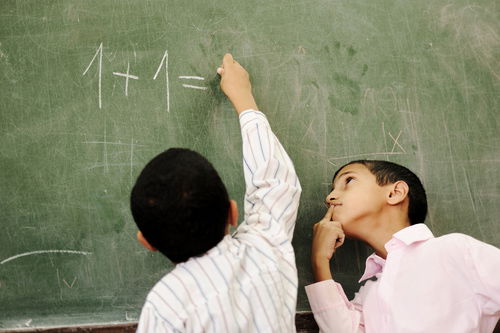What folks the world over refer to as “Singapore Math” is just “math” to us here in Singapore. It is a special method of teaching math that was developed in 1982 for children from kindergarten through grade 6, as part of the national curriculum under the supervision of the Ministry of Education.
What is Singapore Math?

Before the “Singapore Math” system, kids used traditional methods and books from overseas to learn math.
Before the introduction of this method in Singapore, primary schools used math textbooks from other countries. In 1981, the Curriculum Planning and Development Division (then Curriculum Development Institute of Singapore) began plans on the new curriculum.
In 1982 the series of textbooks named “Primary Mathematics” was distributed to schools nationwide. These textbooks were revised once in 1992, with more emphasis put on problem-solving.
Singapore Math’s Popularity Overseas
The effects of the new curriculum were obvious in an international assessment conducted by the Trends International Mathematics and Science Society (TIMSS) done on 4th and 8th graders.
This assessment ranked Singaporean students first in the years 1995, 1999 and 2003. That’s why mathematicians and educators in other countries started paying closer attention to Singapore Math, and textbooks such as Primary Mathematics.
The “Primary mathematics” series of books were developed and distributed to schools nationwide. | Photo source: www.singaporemath.com
In 1998, Jeff and Dawn Thomas from Oregon, U.S.A. established a company named Singapore MathTM to distribute books to schools and homeschooling parents throughout the U.S. They did this after using the method with their own child.
As Singapore Math became more popular, more schools in the U.S and in other countries such as the United Kingdom, Canada and Israel also started using it. As a result, many schools claimed there was a definite improvement in student test scores.
How Does Singapore Math Work?
Singapore Math focuses mainly on building fundamental math skills, rather than focusing on content.
The Singapore math method takes a different approach to the methods taught in other countries.
It teaches students to focus on a few key concepts in greater depth, using a three-step learning approach — concrete, pictorial and abstract.
Teachers use the key concepts in the hope that children will master how these concepts work as well as why they work.
The Three-Step Learning Approach
This particular learning approach is based on the theories of American psychologist Jerome Bruner. He suggests that people learn by first handling real-life objects, then transition into understanding something pictorially and then symbolically.
Children learn mathematics by counting on an Abacus.
So if you follow this process when teaching children, they will have a greater understanding of what they are learning, rather than just memorising facts.
The first step of the three-step approach is the concrete step, where teachers use something kids can touch and feel like dice, blocks or colour pencils to show concepts such as addition and subtraction.
The three-step approach teaches kids to progress gradually and enjoy math in the process.
After this, kids can progress to the pictorial stage and strengthen their knowledge of the concepts they have learnt by using diagrams called “bar-models”. A rectangular bar shape would represent numbers.
This bar method is also useful for subtraction, multiplication, division, fractions, ratios and decimals as well. (More on this later.)
So What ‘Key Concepts’ Does the Singapore Math System Teach? Let’s Have a Look…
There are two key concepts that children learn in the Singapore Math system. Let’s explore these two concepts by solving simple problems.
The Part Whole Concept
Through this concept, educators teach children to understand the concept of ‘parts’, and that the sum of these parts make the ‘whole’.
Here’s a sample problem: “If Isabelle has 3 balls and Leanne has 2, how many balls do both have?”
A child can draw a bar to represent the total, then divide it into a slightly larger portion and a smaller portion.
Next, he will label the two rectangles with the numbers, and then simply add the two to achieve the result as follows:
The part-whole method illustrated. Photo source: www.koobits.com
Eventually, students will use the part whole concept for subtraction, division and multiplication too.
The Comparison Concept
While the part whole concept uses one full bar to represent the whole, the comparison model uses two parallel bars.
For instance, let’s solve this problem: “If Emily has 5 pencils and 3 erasers, how many more pencils does Emily have?”
Students can solve the problem as follows:
Illustration of the comparison method | Photo source: www.koobits.com
The comparison method illustrated with pencils and erasers. | Photo source: www.koobits.com
Students can also use the comparison concept for addition, subtraction, division and multiplication.
Once children are comfortable with using these two concepts to solve basic math problems, they can use them to solve problems involving fractions, ratios and decimals as well.
What about your child? What Singapore Math concepts or models does he or she already know? Please do leave a comment and let us know!
News source:
ALSO READ
Challenge maths with Math Monkey and Vedic Math


